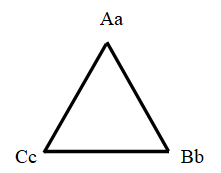The CAB model of personality
This is about the CAB model of personality, which emerged from the works of Buddha, Gorakhnath and Jung. Which can in turn be traced even further back to the Vedic Triguna model of personality.
The most well-known version of the story (for English speaking people) starts with Carl Jung, who delineated the world we experience thus:
- two ways of looking (sensing or intuiting)
- two ways of considering things (thinking or feeling)
- two ways of apprehending phonomena (perceiving or judging)
What is not widely known or appreciated is how amazingly close Jung's functions are to those of Buddha's skandhas. Perhaps someone with knowledge of Jung's personal history can fill in the gaps?
| Buddha's skandhas | Jung's functions |
|---|---|
| forms (rupa) | sensing |
| feelings (vedana) | feeling |
| perceptions (samjna) | perceiving |
| dispositions (samskara) | judging |
| consciousness (vijnana) | thinking |
| intuition |
These differentiated six different types of person, in terms of their Affective (A) Behavioural (B) and Cognitive (C) attributes. In the following table, an upper-case letter symbolises an enabled attribute, a lower-case letter symbolises an unenabled attribute.
| Function | Attribute |
|---|---|
| Intuition | CAb |
| Sensing | caB |
| Thinking | CaB |
| Feeling | cAb |
| Perceiving | Cab |
| Judging | cAB |
This defines a simple symbolic logic, as an aide-memoire for the parts of our personalities which are turned on, energised and functioning (or not). But this is functionally incomplete.

Mathematically, there are more permutations of "abc" and "ABC". This systems approach to psychology and types of personality was explicitly recognised in the Siddha Siddhanta Paddhati (by Gorakhnath). Gorakhnath describes a system of realms or worlds (Loka):
| Loka | Gorakhnath's realms |
|---|---|
| Jada-Jagat | Material bodies and physical forces |
| Prana-Jagat | Life and biological forces |
| Mano-Jagat | Perceptual experiences |
| Vijnana-Jagat | Discriminating intelligence - Buddhi |
| Dharma | Moral consciousness and order |
| Rasa | Aesthetic order |
| Ananda | Creative potential |
The same qualities are found in the Triguna model of personality, with three energies (“gunas”) called Sattva, Rajas and Tamas.
Sattva = Cognitive
Rajas = Affective
Tamas = Behavioural
Where did the Triguna model come from? Some say that it dates back to the Sankhya school of thought that emphasises a computational or systems approach.
Sāṃkhya (सांख्य) or sāṅkhya, also transliterated as samkhya and sankhya, respectively, is a Sanskrit word that, depending on the context, means 'to reckon, count, enumerate, calculate, deliberate, reason, reasoning by numeric enumeration, relating to number, rational'. In the context of ancient Indian philosophies, Samkhya refers to the philosophical school in Hinduism based on systematic enumeration and rational examination
Ref : https://en.wikipedia.org/wiki/Samkhya
Where did the Sankhya school come from?
Kapila (Sanskrit: कपिल) ) ... is most well-known as the founder of the Samkhya school of Hindu philosophy ... Kapila with his student Āsuri, who in the Indian tradition, are considered as the first masters of Samkhya school of Hindu philosophy. While he pre-dates Buddha, it is unclear which century he lived in, with some suggesting 6th-century BCE
Ref : https://en.wikipedia.org/wiki/Kapila
Others date it back, more than 2,000 years ago, to the Vedas, Upanishads, Mahabharata, and Bhagavad-Gita.
The triguna is one of the most extensively studied indigenous personality constructs in post-colonial India (e.g., Asthana, 1950;Edgerton, 1965;Frawley, 2006;Gambhirananda, 1995;Halbfass, 1992;Krishnan, 2002;Murthy & Kumar, 2007;Rao & Paranjape, 2016;Suneetha & Srikrishna, 2009). The origin of the triguna is in texts of ancient India (Vedas, Upanishads, Mahabharata, Bhagavad-Gita, and the Samkhyan texts), initially documented in Sanskrit during 1500-200 BC, and translated into English during the colonial period.
Ref : Suneetha, S., & Srikrishna, C. (2009). Triguna personality theory: Classical representation and modern research. Journal of Indian Psychology, 27(1-2), 35–46.
The Triguna ABC/CAB model still appears today in many places. One, for example, and appropriately, is in the Indian Adminstration Service (AIS) ethics guide on the Structure/Content/Competent of Attitude (CAB or ABC)
Structure/Content/Competent of Attitude (CAB or ABC)
C- Cognition
A -Affectionate
B -Behaviour
Relationship Between Cognition, Affectionate & Behaviour Components Components of the CAB model have a synergistic relation. When an individual possesses positive belief about an attitude object, they typically have positive affective and behaviour associated with the object. Thus, CAB components are different, but they are not completely independent of each other.
Ref : Indian Adminstration Service (AIS) ethics guide
The Triguna model of personality still appears in modern Yogic texts in its Sattva/Rajas/Tamas form. Here is one example:
Harish Johari categorized People in 7 types based on the trigunas. These 7 types are the following.
People with dominant Sattva Guna.
People with dominant Rajas Guna.
People with dominant Tamas Guna.
People with dominant Sattva–Rajas Guna combination.
People with dominant Sattva–Tamas Guna combination.
People with dominant Rajas–Tamas Guna combination.
People with balanced Gunas or with Sattva–Rajas–Tamas Guna combination.
The above list of Gunas shows that:
Trigunas never exist in isolation in a person and always act in conjunction with each other. Even trigunas compete with each other and dominating guna decides the Personality of a person.
Ref : https://www.fitsri.com/yoga/trigunas
and
Dhanwantri: A Complete Guide to Ayurvedic Life
by Harish Johari
